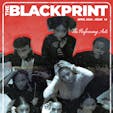BY: ALEXIS ARNOLD
#TheHateUGive opens in select theaters October 5th! Get tickets now at https://t.co/j6brpIHKZh. pic.twitter.com/k0pVtVeDZZ
— The Hate U Give (@TheHateUGive) September 20, 2018
"The Hate U Give" opens nationwide on October 19, but The Blackprint got an exclusive opportunity to review the film before its early release in D.C. on Friday, October 5. A film that explores police brutality, prep school and Tupac in a nuanced and heart-wrenching storyline, it's a must-see.
Amandla Stenberg plays Starr Carter, a girl who's identity uneasily straddles the mostly black, low-income neighborhood where she lives and the wealthy, mostly white private school she attends. This balancing act falls apart when she sees her friend get shot by a police officer. As the only witness to the shooting, she is faced with the difficult choice of protecting herself and her family, or speaking up to do justice to her fallen friend, Khalil, played by Algee Smith (your new #mancrushmonday).
While the movie focuses on a heavy topic, it has some funny moments thrown in to lighten the mood, and a twist ending that tugs at your heartstrings. It is definitely worth seeing opening weekend.
"The Hate U Give" is based on the bestselling novel by Angie Thomas of the same name. It is difficult for any film adaptation to condense the level of detail in a novel. But, the film does a good job of picking up on the themes that Thomas was trying to articulate.
It is obvious that the narrative comes from a very liberal point of view, but it gives a candid look at the black anger that spreads through beaten down, underserved communities when they are continually denied justice. The film keeps all of the emotions raw and doesn't shy away from the tougher conversations around police brutality, covert racists and the consequences of activism.
As person of color who attended a predominately white private high school (and now college), Amandla's performance as Starr captures the balancing act of code switching in a way I have not seen many other films do. The constant attention to one's presentation and image. The constant comparison to white peers. The constant need to distance oneself from anything that could possibly be misconstrued as "ghetto" and therefore from large chunks of black culture that the white kids will eventually appropriate for their fashion fix or social clout.
Howard University Sophomore Jordan Tucker found the movie to be very powerful, especially the monologue at the end. However, she had one criticism: "Personally, I feel like the role was made for a dark skin girl," Tucker said.
There was some concerns about colorism because the book cover features a darkskin girl while Stenberg is quite light skin. "I know Angie [Thomas], the writer, said she had Amandla in mind, but I don't think that was an accurate representation of blackness and code switching," Tucker said. "When you're darker skinned, that code switching, that's is important. People will still see you as threatening, whether you code switch or not."
"I never would have taken this role if it felt like it would have been inappropriate for me to take it…if I felt the description of the character didn't parallel my life and experiences." Stenberg said when asked about the comparison. She went on to state that the cover art existed before the book was written, but hopes that her character, Starr, can exist as representation of a "myriad of blackness."


